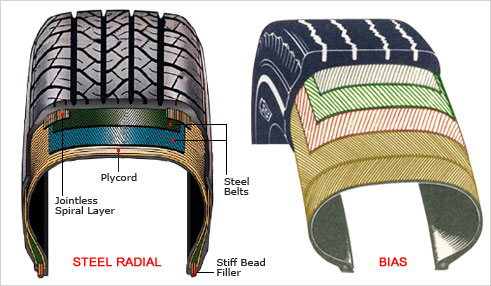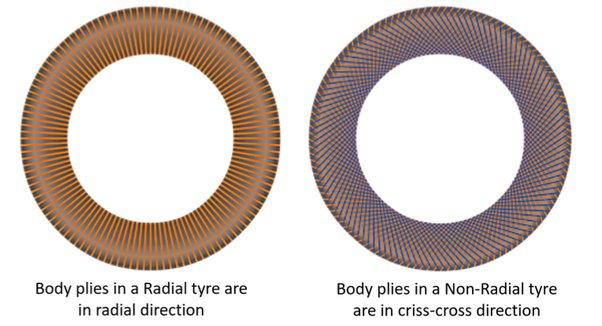Your Shopping Cart
Your cart is empty.
Subtotal ( items)
Instant Rebate Applied:
Promo Code Applied:
Have a Promo Code?
Size:
Item
Item
Selected for:
/ each
Add-Ons
Wireless air pump capable of pumping up to 150 psi with 2000 MAH power bank.



Fully protect your clothes and vehicle interior during transportation of your tires. For Tires up to 31" tall and wheels up to 22".
Per sensor
Add TPMS Sensors
/per sensor
Please confirm the make, year, model and trim of the vehicle you want to purchase for:
How many sensors do you need?
The vehicle you have selected is not compatible with aftermarket TPMS Sensors.
Enter a different vehicle to add TPMS sensors

 Front Tire Size:
Front Tire Size:
 Rear Tire Size:
Rear Tire Size:
 Your Vehicle:
Your Vehicle:
Pros & Cons of Staggered Fitment

Attractive Design

Improved Handling

Improved Cornering
Bumpier Ride
Poor Traction in Snow
How do I find my tire size?



Need help?
 Your Vehicle:
Your Vehicle:
Pros & Cons of Staggered Fitment

Attractive Design

Improved Handling

Improved Cornering
Bumpier Ride
Poor Traction in Snow
How do I find my tire size?



Need help?
Pros & Cons of Staggered Fitment

Attractive Design

Improved Handling

Improved Cornering
Bumpier Ride
Poor Traction in Snow
Need help?
Need help?
How do I know if I have an LT tire?

 Your Vehicle:
Your Vehicle:
Sorry, we could not find any available
wheels for your sizing selections.
Need help?
What Are Bias Ply Tires Used For?
By Tire Agent Staff
August 11, 2023
In the world of tires, the term "bias ply" carries a unique set of characteristics that set it apart from its modern counterpart, the radial tire. These two tire constructions have distinct attributes that make them suitable for specific applications.
Related read: What are radial tires?
Now let's explore what bias ply tires are, where they shine and how they differ from radial tires.
Bias Ply Tires Defined
Bias ply tires, often referred to as "cross-ply" tires, represent a traditional tire construction method. In this design, the tire's internal body plies, or layers of fabric, run diagonally across the tire, forming a crisscross pattern.
Source: Firestone
The angles of the plies alternate between each layer, creating a robust and sturdy tire structure. This construction style offers durability and load-carrying capacity, making bias ply tires well-suited for specific applications.
Best Uses For Bias Ply Tires
Bias ply tires excel in specific scenarios due to their inherent characteristics. These tires are commonly found in applications where strength and toughness are paramount.
Off-road vehicles, agricultural machinery, construction equipment and trailers are prime examples of where bias ply tires shine. Their rugged construction makes them excellent for handling heavy loads and rough terrains, where their sturdiness is essential for tackling challenging environments.
Also, bias ply tires are preferred by some classic car enthusiasts who want to preserve the authentic look and feel of their vintage vehicles. The retro appearance of bias ply tires adds an extra touch of nostalgia to these automotive treasures.
What Is the Difference Between Radial and Bias Tires?
While radial and bias ply tires serve their purposes, they differ significantly in construction and performance characteristics.
- Construction: The most notable distinction between the two lies in their internal structure. Radial tires, the modern standard, have their body plies running radially from bead to bead, perpendicular to the tread. This design reduces rolling resistance and heat buildup, improving fuel efficiency and longer tread life. In contrast, bias ply tires have diagonal plies, which can cause more heat generation and higher rolling resistance.
- Ride comfort: Radial tires offer a smoother and more comfortable ride due to their flexible sidewalls and lower heat buildup. Bias ply tires, while rugged, tend to be stiffer and transmit more road irregularities to the driver.
- Handling and traction: Radial tires provide better handling, cornering stability and traction, especially on wet or slippery surfaces. Their increased footprint and improved contact with the road enhance grip and maneuverability. Bias ply tires, however, may struggle to provide the same level of handling and traction.
Are There Winter Bias Ply Tires?
Winter-biased all-season tires seamlessly blend cold-weather competence with year-round versatility. Crafted to tackle chilly challenges, they feature advanced rubber compounds engineered for enhanced traction on frosty roads. Siped tread patterns optimize grip on ice and snow while maintaining agility in milder seasons.
This intelligent fusion ensures confident winter drives without sacrificing warm-weather performance. Ideal for regions with moderate snowfall and fluctuating temperatures, winter-biased all-season tires embody adaptability, catering to drivers seeking a balanced solution for diverse climates.
Are Bias Ply Tires Suitable For Trailers?
When choosing tires for your trailer, the decision between bias ply and radial tires warrants careful consideration. Bias ply tires have a sturdy and time-tested construction with diagonal layers of fabric, making them a viable option for specific trailer applications.
For an example of a bias ply tire, see Carlisle Sport Trail bias ply trailer tire.
Bias ply trailer tires are well-suited for heavy-duty hauling and rugged terrains. Their robust build provides excellent load-carrying capacity and durability, making them a preferred choice for trailers used in construction, agriculture and off-road scenarios.
If your trailer frequently spans uneven surfaces or carries substantial weight, bias ply tires can withstand the demands of such conditions.
However, it's important to note that bias ply tires do have some drawbacks. They tend to generate more heat during travel, which can lead to faster wear and reduced fuel efficiency compared to radial tires. Additionally, bias ply tires might offer a slightly rougher ride, which could impact the overall comfort of your towing experience.
If you prioritize strength, durability and heavy-duty performance for challenging terrains and loads, bias ply tires can be a reasonable choice. But if you value improved fuel efficiency, a smoother ride and better handling, you might want to consider the alternative — radial tires — for your trailer.
Always evaluate your trailer's requirements and your preferences before making the final decision. For even more on trailer tires, check out our complete guide to trailer tires here.



